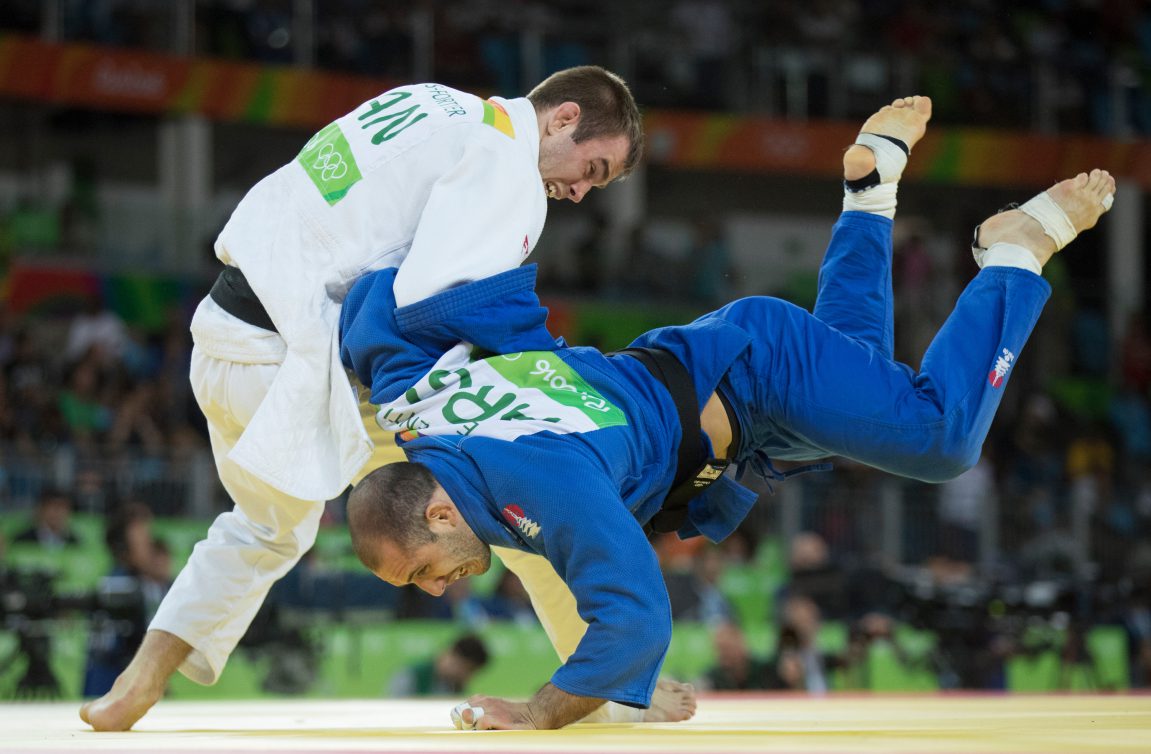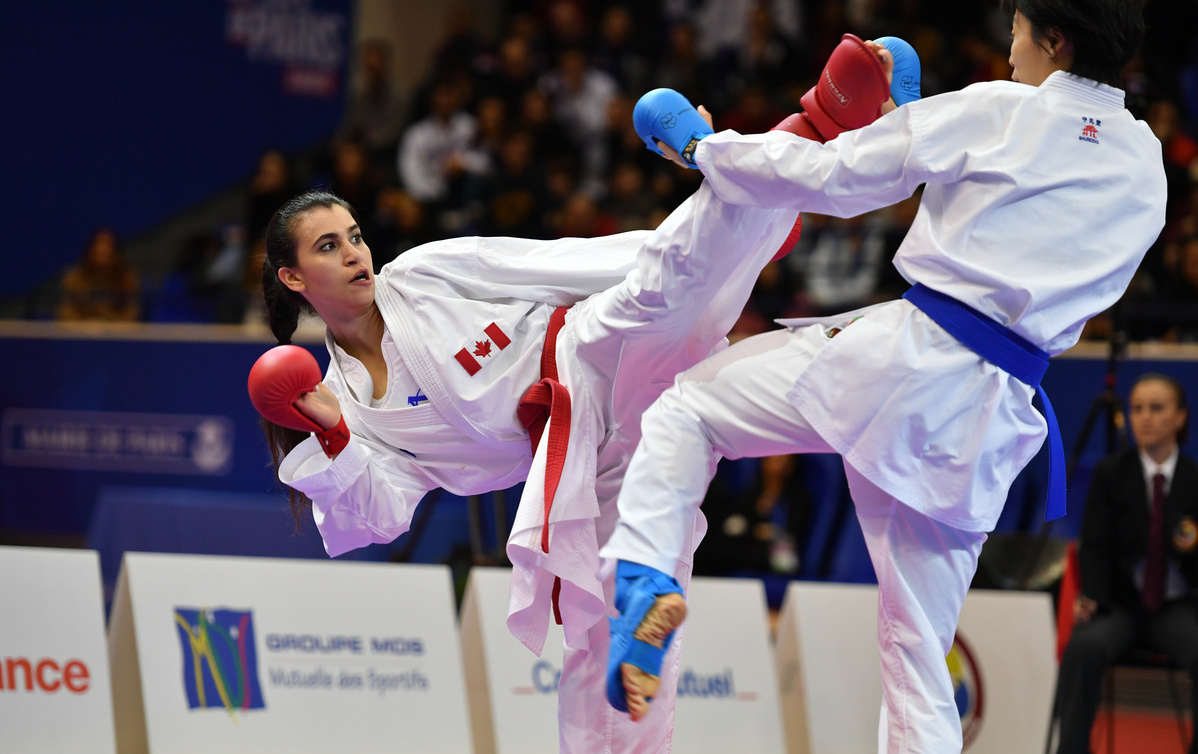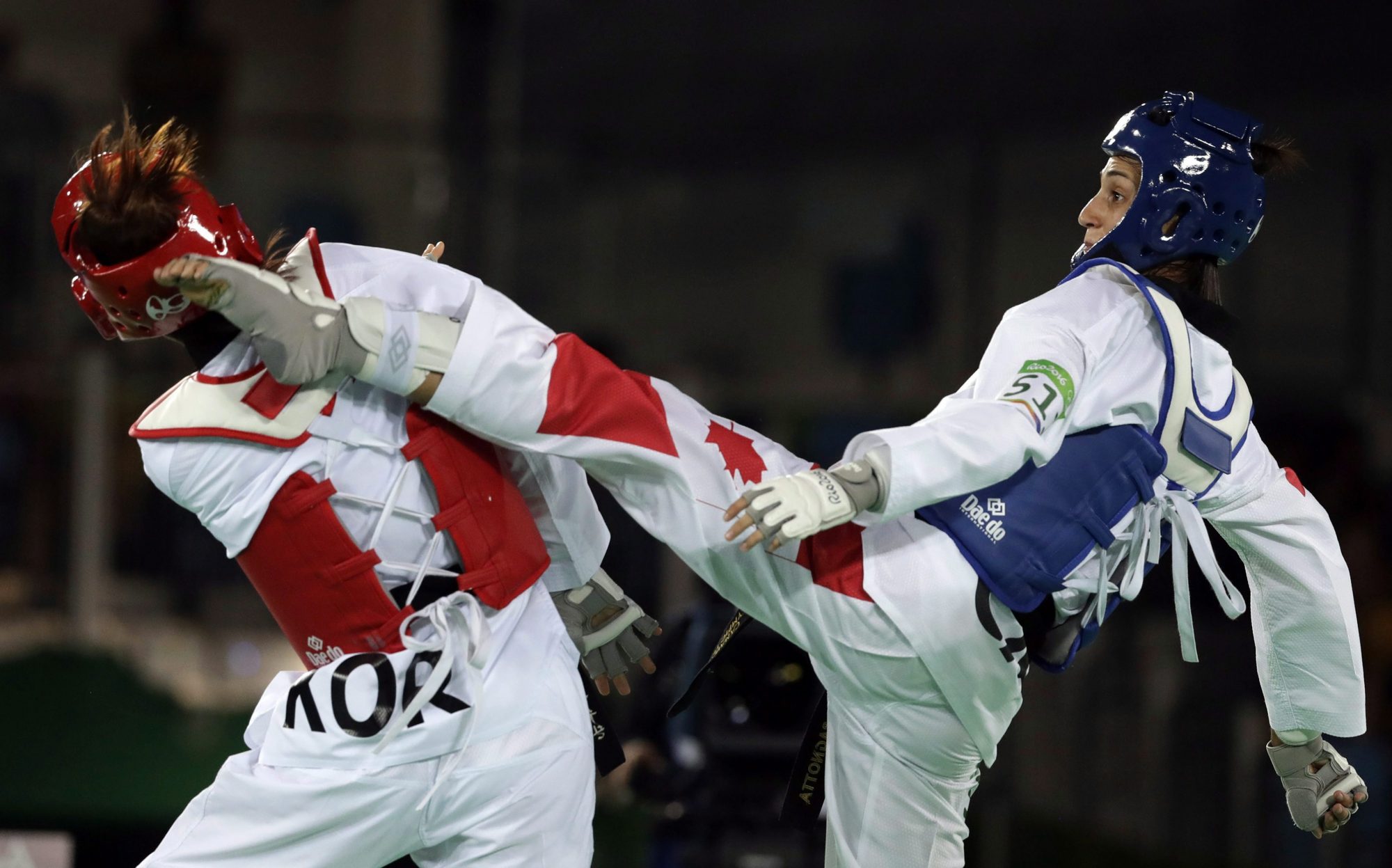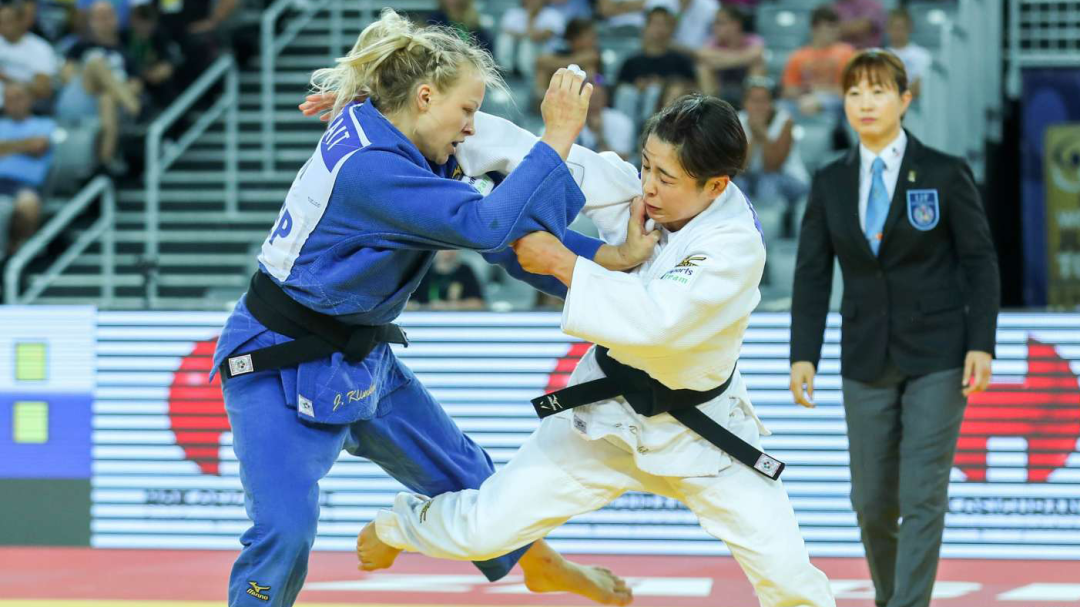A beginner’s guide to judo, karate, and taekwondo
For the first time ever, karate will be joining judo and taekwondo in the Olympic Games at Tokyo 2020.
If you’re not familiar with the unique characteristics of each, it can be easy to mix them up. So here’s a chance to read up on their origins, tactics, equipment and more.
History of judo vs karate vs taekwondo
The histories of these sports are complex, but here are the quick versions:

Canada’s Antoine Valois-Fortier battles with Emmanuel Lucenti of Argentina during second round judo action at the Olympic Games in Rio de Janeiro, Brazil, Tuesday, August 9, 2016. Valois-Fortier won the match and advanced to the next round. COC Photo/Jason Ransom
Judo was developed in Japan by Dr. Jigoro Kano, the first Japanese member of the International Olympic Committee, during the later stages of the 19th century. He studied multiple forms of self-defence and integrated the best of them into his new sport. Fittingly, judo made its Olympic debut at Tokyo 1964.

Photo taken during bronze bout of 2017 Karate 1 Premier League Paris: Canada’s Jumaa Haya vs China’s Yin Xiaoyan
Karate was formalized as a martial art in 1935, though its beginnings can be traced to early in the 17th century on the island of Okinawa, between mainland Japan and southern China. Hand-to-hand combat skills were practiced after weapons were forbidden to be worn in daily life. There are two forms of karate. Kumite is a series of one-on-one bouts while in kata, athletes are judged on their demonstration of choreographed techniques.

Melissa Pagnotta of Canada, right, and Oh Hyeri of South Korea compete in a women’s taekwondo 67kg bout at the 2016 Summer Olympics in Rio de Janeiro, Brazil, Friday, Aug. 19, 2016. (AP Photo/Andrew Medichini)
Taekwondo can date its origins on the Korean peninsula back more than 1000 years. Banned during the first half of the 20th century by the occupying Japanese government, the martial art was secretly handed down by masters. After World War II, a demonstration to South Korea’s first president distinguished it from karate and gyms began to open all over the country in the 1950s. Taekwondo officially became an Olympic sport at Sydney 2000.
What do judo, karate, and taekwondo competitors wear?
In judo, judoka wear white or blue judogi. In karate, karateka dawn a white gi with a blue or red belt and matching gloves. Combatants in taekwondo wear a white dobok. There are also required protectors on their chest and heads, guards on their groins, forearms and shins, as well as gloves, a mouthguard, and even sensing socks for the electronic scoring system.
How do you win in judo, karate, and taekwondo?
Judo matches last four minutes and the goal is for competitors to control their opponents with throws, groundwork, and strikes; no kicking or punching is allowed. Ippon (full point) is awarded and the match is over when an opponent is thrown on their back with speed, force and skill. Otherwise, if a judoka is able to immobilize their opponent for 10 seconds, waza-ari (half point) is awarded. A 20-second immobilization results in an ippon (full point) and an automatic victory. Two waza-ari equal one ippon. Judokas are awarded waza-ari for a throw that is less powerful than an ippon, so a throw that lands your opponent to their side, shoulders, or rolls them onto their back.
In kumite karate, men’s bouts last three minutes and women’s bouts last two minutes. For every kick, strike or punch made on an opponent, one, two or three points can be awarded, depending on how the technique is executed. The goal is to have the most points and a bout can end early if one combatant establishes an eight-point lead.
In kata karate, there are 98 recognized techniques to choose from and competitors should show a variety of movements which are judged for their timing, strength, power, balance and speed.
Taekwondo matches are played out on an octagonal mat. Athletes battle over three two-minute rounds and whoever earns the most total points is the winner. A “golden point” round is added if there is a tie. Depending on the type of attack and where it lands, points awarded can range from one (for a punch to the chest protector) to five (for a turning kick to the head).
Do judo, karate and taekwondo have weight classes?
Judo, kumite karate, and taekwondo all have weight classes – designated by upper limits – to ensure combatants are fairly matched.
Judo has seven weight classes for each gender, ranging from 60kg to +100kg for men and 48kg to +78kg for women. There are three weight classes per gender in kumite karate while kata is only divided by gender. Taekwondo has four Olympic weight classes per gender, ranging from 58kg to +80kg for men and 49kg to +67kg for women.
Who are notable Canadians in judo, karate and taekwondo?
Nicolas Gill is a four-time Olympian and and two-time Olympic medallist, who won bronze at Barcelona 1992, silver at Sydney 2000 and was Canada’s Opening Ceremony flag bearer at Athens 2004. Now the high performance director of Judo Canada, he coached Antoine Valois-Fortier to bronze at London 2012.
At Beijing 2008, Karine Sergerie captured the silver medal in the women’s 67kg weight class for Canada’s best-ever Olympic result in taekwondo.
Though karate hasn’t yet been contested at the Olympic Games, it has been part of the Pan American Games since 1995. At Lima 2019, Daniel Gaysinsky and Kathryn Campbell both won kumite silver medals for Canada.




